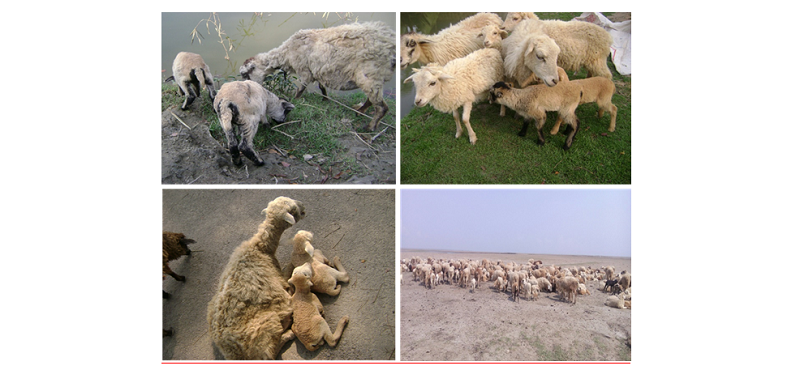Abstract
This study was conducted to investigate the phenotypic, production and reproduction potentials of indigenous sheep of Bangladesh. Data were collected from six different geographic locations that covered twelve upazila from eight districts. Information were collected from 503 individuals using a structured questionnaire through personal interaction, on spot recording and phenotypic measurements from different age groups during the period of October 2015 to February 2017. The predominant coat color was found as creamy or whitish in the studied flocks that ranged from 34% to 89% of the total population with mean a of 62%. The average mature live weight of rams and ewes were 17.90±91 and 15.07±0.11 kg, respectively. The morphometric features like wither height, chest girth, body length, head length, ear length, tail length, scrotal length and scrotal circumference were 58.47±0.75, 68.59±0.74, 58.88±0.83, 16.15±0.24, 11.23±0.32, 10.83±0.23, 10.23±0.20 and 16.33±0.18 cm in rams and that of 49.02±0.28, 59.77±0.27, 49.08±0.30, 15.04±0.12, 8.63±0.17 and 10.55±0.15 cm in ewes, respectively. The mean birth weight, weaning weight and six months weight were 1.04±0.01, 5.40±0.08, 8.36±0.11 kg, respectively. The average age at first lambing, lambing interval, post-partum heat period, litter size, service per conception and age at culling were 12.81±0.06 month, 179.68±1.06 and 41.37±0.58 days, 1.99±0.02 and 1.18±0.01 and 3.84±0.08 years respectively. All these production and reproduction traits varied significantly among the studied locations except S/C. In conclusion, this study provided some baseline information on indigenous sheep genetic resources of Bangladesh that could be utilized in planning future conservation and genetic improvement scheme.
Acknowledgements
This work was funded by Conservation and Improvement of Native Sheep Through Community and Commercial Farming (Component- A) 2 Phase project, Bangladesh Livestock Research Institute, Savar, Dhaka, Bangladesh. The authors wish to thanks the farmers for their cordial help and cooperation during the investigation in the field.
Figures & Tables

Figure 1 Photograph of indigenous sheep genetic resources of Bangladesh


